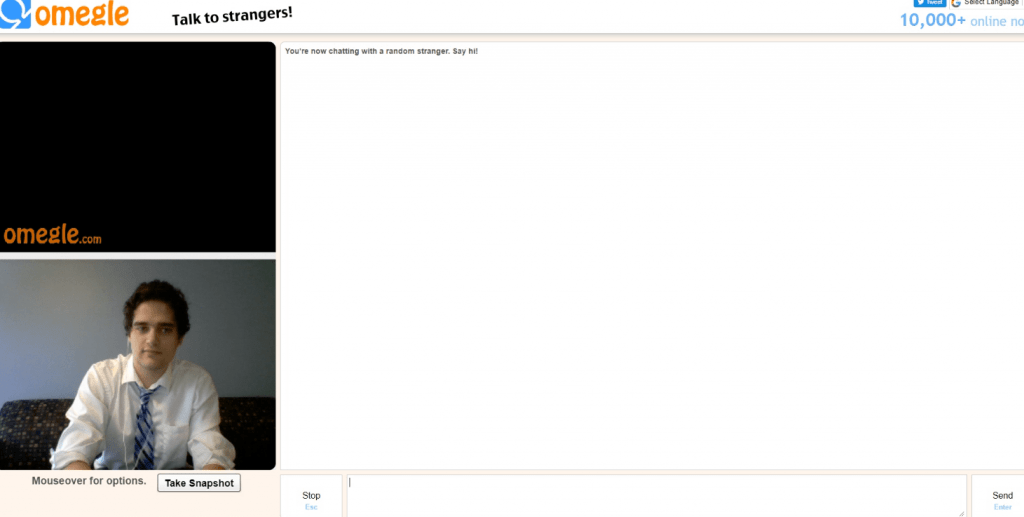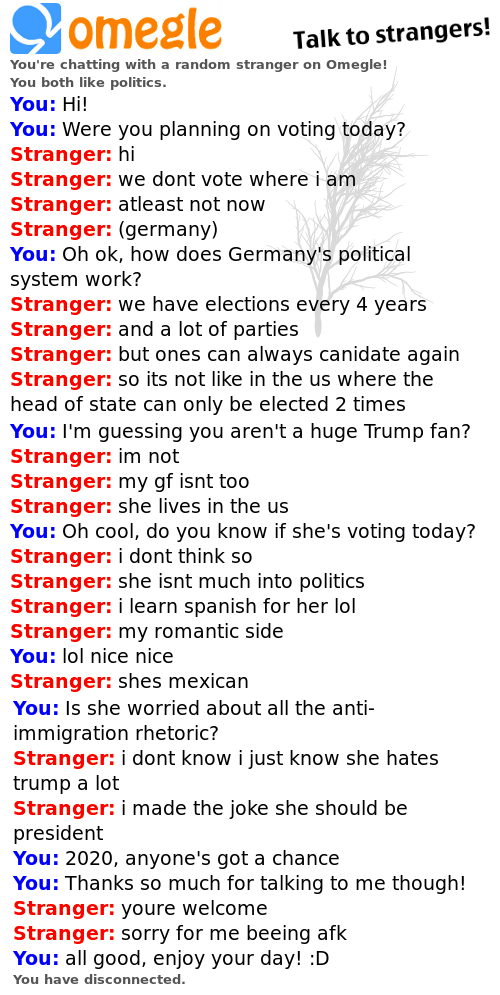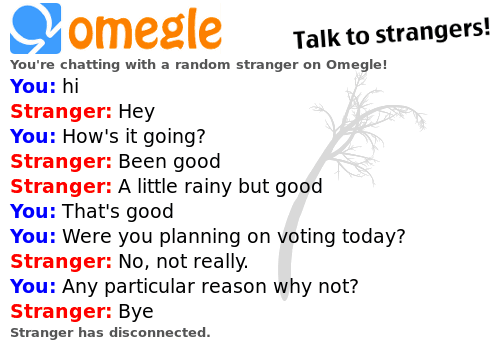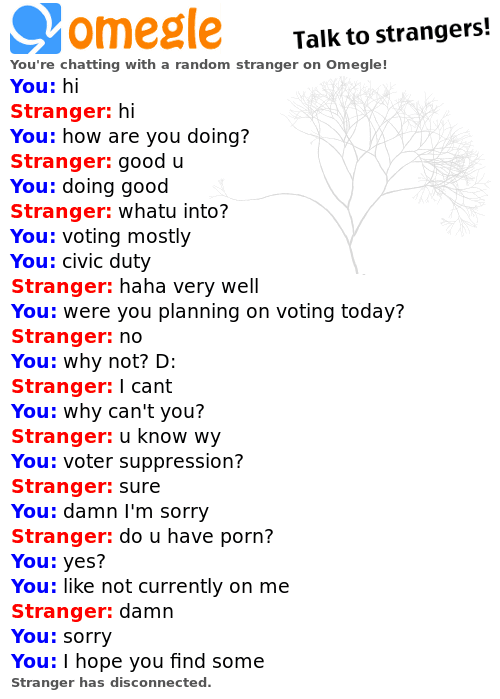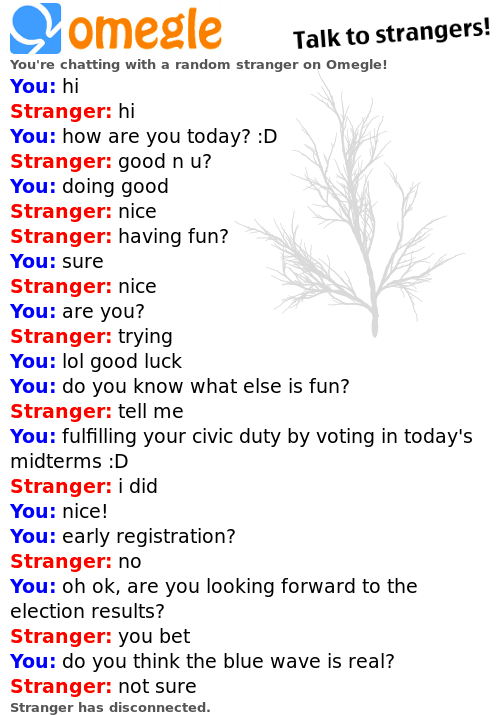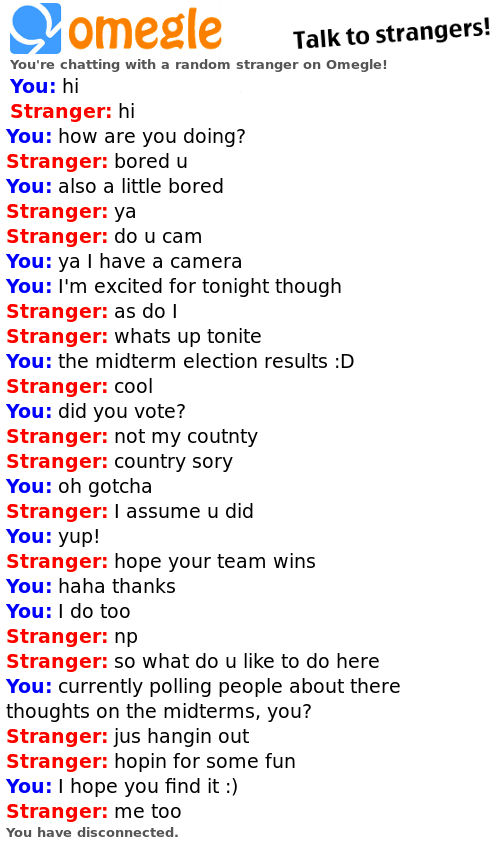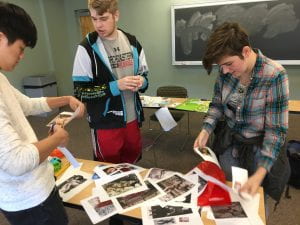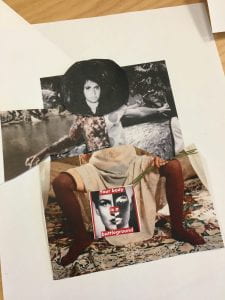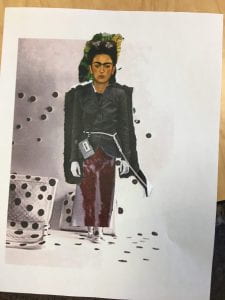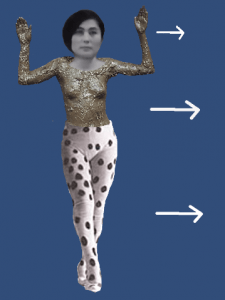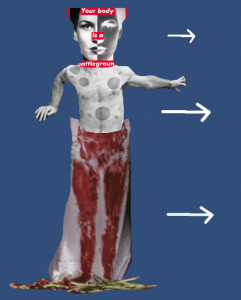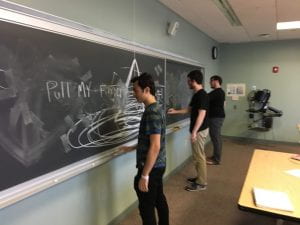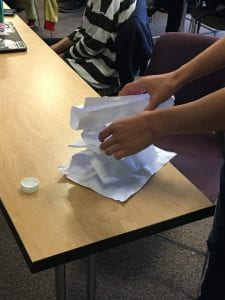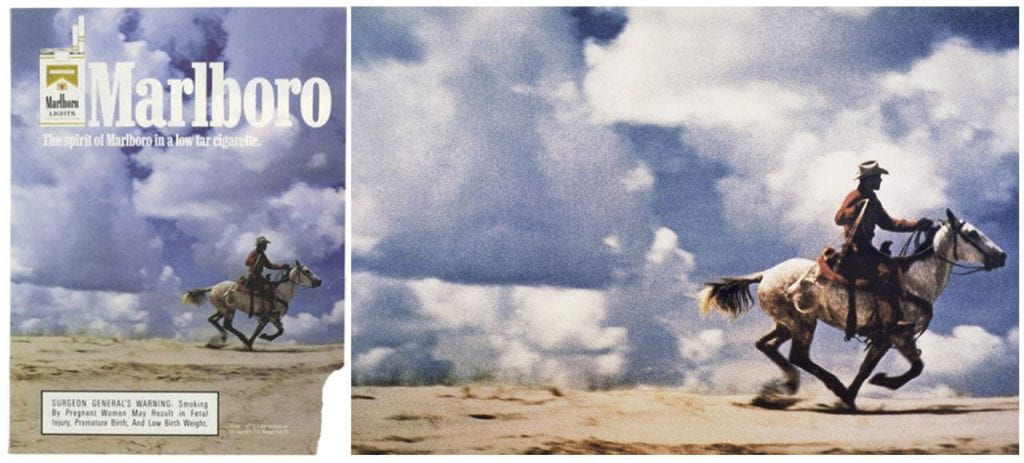For my final project (https://almost-tolerable.itch.io/mr-wendell) I chose to create an interactive fiction game. In the game you are a boy talking to your closest friend, Mr. Wendell, about what the future holds.

Mr. Wendell
Mr. Wendell is a reflection of the protagonist, conflicted and rejected by society. While Mr. Wendell does not change, the protagonists attitude towards Mr. Wendell can vary wildly. You can choose to stay with Mr. Wendell in the closet where it is safe, go out and leave Mr. Wendell behind, burn Mr. Wendell, or take Mr. Wendell with you to college. While the game isn’t nearly as long as I would like it to be, I still love the concept of a story that consists entirely of crazy, one-sided dialogue from the protagonist. I found it rewarding to develop the mutual relationship between the two, especially when it came to dialogue that was self-reflective, such as reassuring Mr. Wendell of his fears of the future or talking about how Mr. Wendell had been broken.
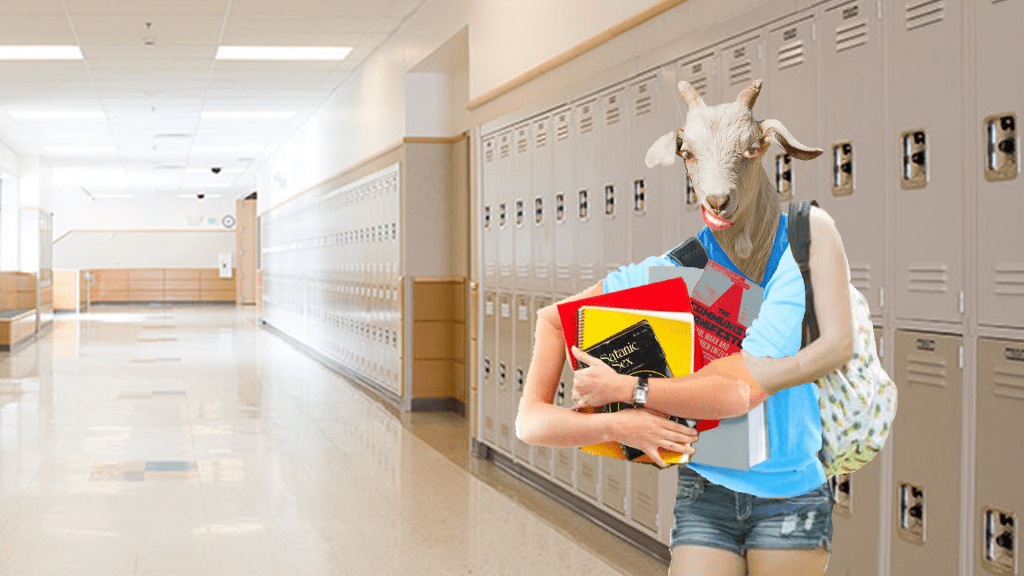
Bethany
Initially I had envisioned a much larger scale, with the protagonist going through a world of half-human, half-goat people yet facing relatable dilemmas. The world would be extraordinary harsh with all other characters speaking through a robotic voice box. The protagonist would choose whether to associate with Bethany or his friends, and then choose his nurturing mother or his hard working father. Demonic aspects were layered throughout to exaggerate the cruelty of the world, with the friends beating and killing an ostracized classmate and with the father’s job being to kill all the deformed goat-human babies being born. While this is still a game and a world I’m extremely interested in exploring, especially diving deeper into the sci-fi elements, it was far too big of a scope for this project, and I ended up going for the much more grounded shrine that was Mr. Wendell.
Mr. Wendell was inspired by a number of elements, with the visual representation being the immediate focus. I really enjoyed the wide variety of dada collages, especially those that replaced the human form with mechanical parts such as Hannah Höch’s The Beautiful Girl and Max Ernst’s Sacred Conversations. I was also inspired by Dali’s surrealist work and carried that over to the melting plastic in addition to John Vochatzer’s contemporary collages being a great showcase of creatures with a terrifying presence. I also wanted to hint at the idea of the readymade, with there being a constant question if Mr. Wendell, and thus the protagonist, are just trash. I thought this paralleled nicely with the idea of being “broken” and a question of what the ideal state of something is, both for art and one’s own self.
As far as the goat imagery, Catherine was a big inspiration, with the dream like sequences where all men are turned into goats being especially compelling. I thought the goat would be interesting, posing as both a plush toy friend like many other barnyard animals, and calling to some deeper, possibly demonic power.
Overall I’m very happy with how the game turned out. I still think it is tragically short and would highly encourage multiple playthroughs, but I really enjoyed the artistic styles I got to experiment with, and the unique narrative stance of the one-sided conversation

